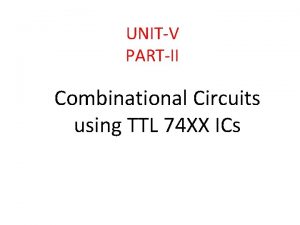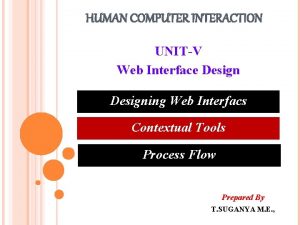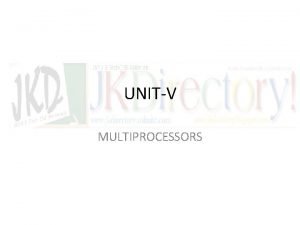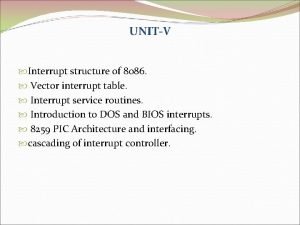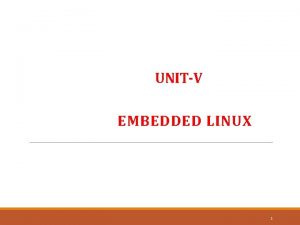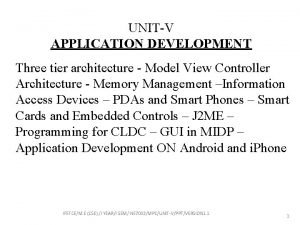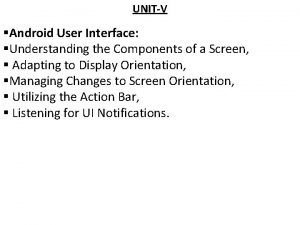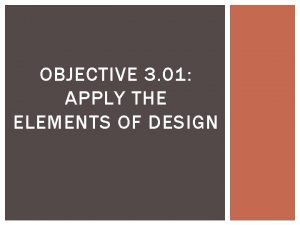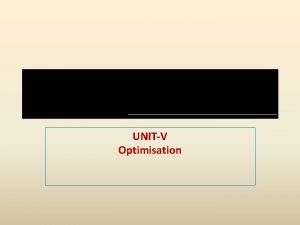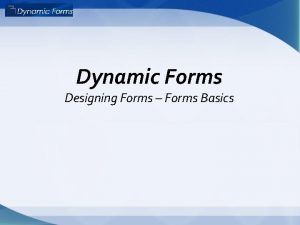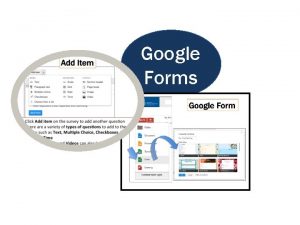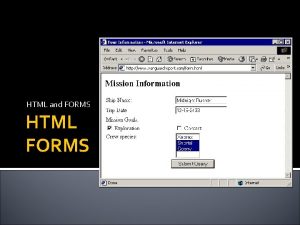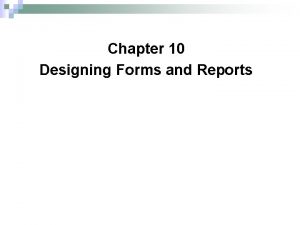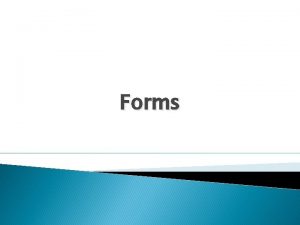UNITV FORM DESIGNING FORM DESIGNING Meaning of forms













- Slides: 13

UNIT-V FORM DESIGNING

FORM DESIGNING Meaning of forms designing A form designing means deciding the contents and layout of forms for the purpose of collecting and processing the required information economically and efficiently. Importance of Forms Designing The importance of forms designing can be understood because of the following points. � 1. Forms are used to collect record and communicate the required information according to the expectations of the needy persons. Therefore, forms are treated as tools of office work. If the forms are badly designed, it reduces the speed of operation of office work.

� 2. The forms create psychological impact on the people who use it. The people may be frustrated and get tired if the forms are not designed properly. � 3. The badly designed forms results in more number of mistakes in clerical work. Hence, there is a need of welldesigned forms to avoid mistakes in clerical work. � 4. Sometimes, the designed form may project a poor image in the minds of the customers. This may adversely affect the good will of the company.

� 5. System is the basis form design. Hence, forms are designed according to the needs of the system. If forms are badly designed, they can ruin a whole system. � 6. The well-designed forms contribute much to the efficiency of employees of an organization and efficiency of the system. � 7. The cost of forms is less than the cost of completing office forms, transporting and filling of office forms. The ratio will be greater if the forms are badly designed.

�Principles of form designing Only a well-designed office forms serve the purpose of office. Therefore, some principles have to be followed in designing office forms. A brief explanation of such principles is given below. � 1. Principle of Use: A form may be designed based on need aroused. Need for a firm is aroused due to some reasons. The reasons may be recording of data in a systematic way and/or avoiding of recording of data repeatedly and/or fix the responsibility for the work done.

� 2. Principle of Standardization: A standard form is not only reducing cost but also eliminates chances of confusion. A form may be standardized in respect of, � Paper Quality � Number of prints � Paper colour � Method used to produce forms, etc.

� 3. Principle of Centralized Control: The office manager should nominate a person who is responsible for the designing of forms, use and replacement. If not so, numbers of new forms are added with existing forms and old and/or outdated forms are remaining in use resulting in confusion. � 4. Principle of Systems integration: The design of the forms are decided in such a way that they are easily adjusted with systems design. If so, information are not obtained or given in duplicate. � 5. Principle of Ease of Entry of Data: A form is to be designed in such away that facilitate the entry of data without much difficulty. This depends largely on the printing style, surface on which written, entry method, sequence of information etc.

� 6. Principle of Multiple Uses: A form can be designed for multipurpose. Such forms helps reduce space, which in turn facilitates better control on preparation of forms and printing them. � 7. Principle of Identification: Designs of forms should be in such a way that they are easily identifiable without much difficulty. Different colors, papers and ink for printing are used by the office manager in order to differentiate the purpose for which the forms are used.

Factors to be considered in forms designing Form design in affected by some factors. These factors should be borne in mind while designing the forms. � 1. Suitable for the Purpose: Easy clerical operation is the main purpose of designing an office form. At the same time, if a blank sheet of paper is enough to serve the purpose, there is no need of preparing or designing any printed form. Therefore, form should be designed in such a way that they are suitable for the purpose for which they are meant.

� 2. Ease in Use: The forms should be designed that they are easy to use. If a form is filled up with the help of a typewriter, adequate space is provided according to the typewriter. Likewise, a form is filled up with the help of accounting machine or computer; forms have to be designed accordingly. Besides, spacing between lines is also properly provided. � 3. Simple Design: Simple form facilitates the user in use and requires less time in completion. Simple design means providing clear column, headings, concise and clear instruction for use and adequate space for numbering. Besides, frequently required information should be placed in such a position on the form, which can be readily accessible by the reader.

� 4. Size of the Form: The size of the form depends upon the purpose for which the forms are meant. The office manager should consider the following points while deciding size of the form. Size of the column permits entries to be made Description of data or information is entered at the top of the form and the space needed for it. � 5. Title of Form and Number: The title of the form and number should be printed at the top of the form. The title should be short and simple. Both title and number help the storekeeper to store the forms properly.

� 6. Proper Printing: Forms must be printed properly. The style of letters, size of letters and the type of printing are based on the purpose of the form. The style and size of letters are in such a way that can be readable very easily. Besides, the office manager with regard to a neat and pleasing look of the office forms must take proper care � 7. Use of Paper: The proper type of paper is used for printing the forms. The method of handling appearance desired, duration of keeping the forms and the impression designed (of writing, typing or printing) are the determinants of type of paper utilization.

� 8. Ease in Punching, Scoring and Perforation: It is very important to consider that the forms should allow the operations of punching, scoring and perforation very easily. Hence, it is necessary that the exact specification should be considered while designing them. A hand punch may be used in the office if a punching is required. Scoring facilitate the folding of paper and Perforation helps to detach them from the forms book after they are filled up.
 Unitv pin
Unitv pin Process flow of web interface design in hci
Process flow of web interface design in hci Characteristics of multiprocessor
Characteristics of multiprocessor What is interrupt vector table in 8086
What is interrupt vector table in 8086 Unitv
Unitv Unitv download
Unitv download Unitv apk cracked
Unitv apk cracked Unitv android
Unitv android Why are related forms more agreeable than unrelated forms?
Why are related forms more agreeable than unrelated forms? Contracted short forms
Contracted short forms Why are related forms more agreeable than unrelated forms
Why are related forms more agreeable than unrelated forms Why are related forms more agreeable than unrelated forms?
Why are related forms more agreeable than unrelated forms? Weak and strong form of can
Weak and strong form of can Natural form objects
Natural form objects
